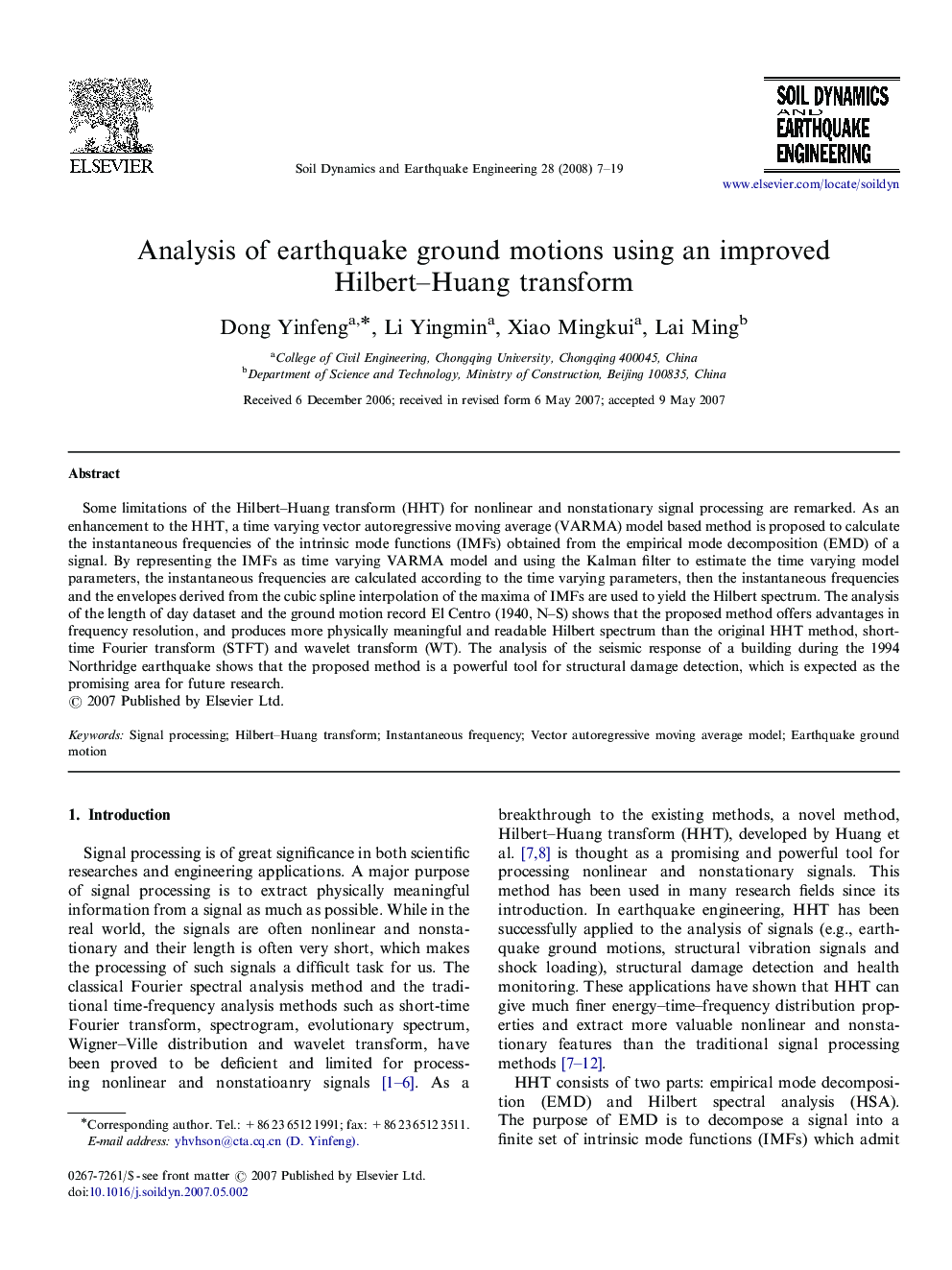| Article ID | Journal | Published Year | Pages | File Type |
|---|---|---|---|---|
| 305159 | Soil Dynamics and Earthquake Engineering | 2008 | 13 Pages |
Some limitations of the Hilbert–Huang transform (HHT) for nonlinear and nonstationary signal processing are remarked. As an enhancement to the HHT, a time varying vector autoregressive moving average (VARMA) model based method is proposed to calculate the instantaneous frequencies of the intrinsic mode functions (IMFs) obtained from the empirical mode decomposition (EMD) of a signal. By representing the IMFs as time varying VARMA model and using the Kalman filter to estimate the time varying model parameters, the instantaneous frequencies are calculated according to the time varying parameters, then the instantaneous frequencies and the envelopes derived from the cubic spline interpolation of the maxima of IMFs are used to yield the Hilbert spectrum. The analysis of the length of day dataset and the ground motion record El Centro (1940, N–S) shows that the proposed method offers advantages in frequency resolution, and produces more physically meaningful and readable Hilbert spectrum than the original HHT method, short-time Fourier transform (STFT) and wavelet transform (WT). The analysis of the seismic response of a building during the 1994 Northridge earthquake shows that the proposed method is a powerful tool for structural damage detection, which is expected as the promising area for future research.
